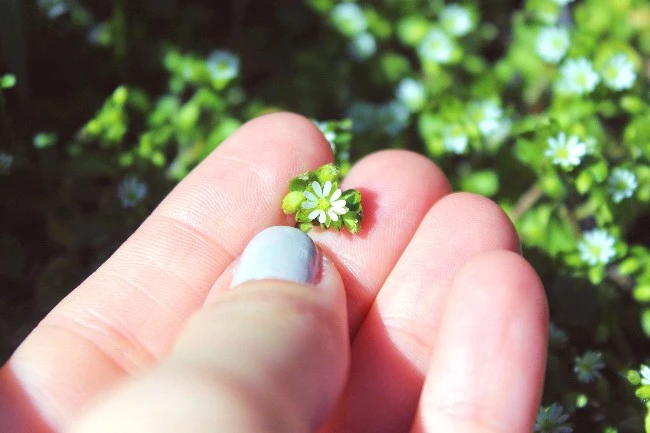10. Thymus Vulgaris
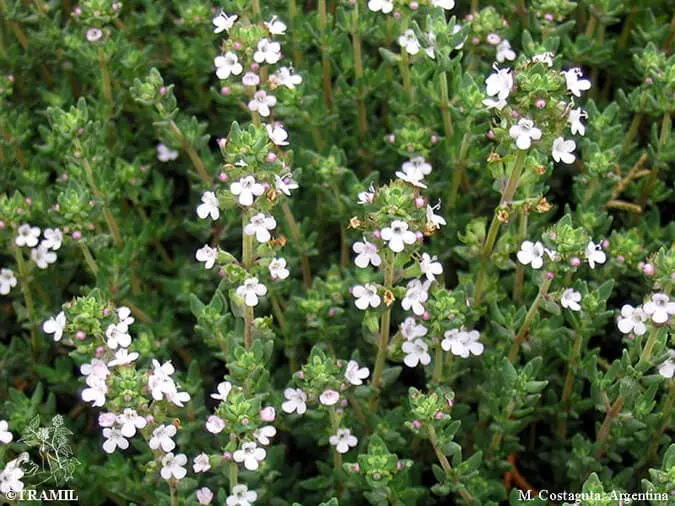
The Lamiaceae (mint) family includes common thyme, a small, woody, evergreen perennial. The term thyme comes from the Greek word thymos, which means “perfume.” It has a strong scent and aroma. It grows in a mound 6 to 12 inches tall and 6 to 16 inches wide and is used mostly as an aromatic culinary herb. This species has a large number of cultivars. This plant prefers dry, sandy, or rocky soils and grows slowly. It requires adequate drainage and prefers full sun. The plant can withstand both frost and drought. Although common thyme is a low-maintenance plant, it does need to be clipped when it becomes lanky. In a pollinator garden, common thyme is an excellent choice. Bees, butterflies, and other pollinating insects are drawn to flowers.
9. Lobelia

Lobelia is a flowering plant genus with 415 species found largely in tropical and warm temperate regions of the world, with a few species expanding into cooler temperate regions. Annuals grow to be around 12 inches tall at the most. Lobelia is a genus of big and tiny annual, perennial, and shrubby plants that are hardy and tender, grow in various settings and come in various colours. Many species appear to be quite different from one another. All have simple, alternating leaves and tubular blooms with two lips and five lobes. Their attractiveness as ornamental garden topics stems from the abundance of flowering and bloom colour intensity.
8. Kenilworth ivy
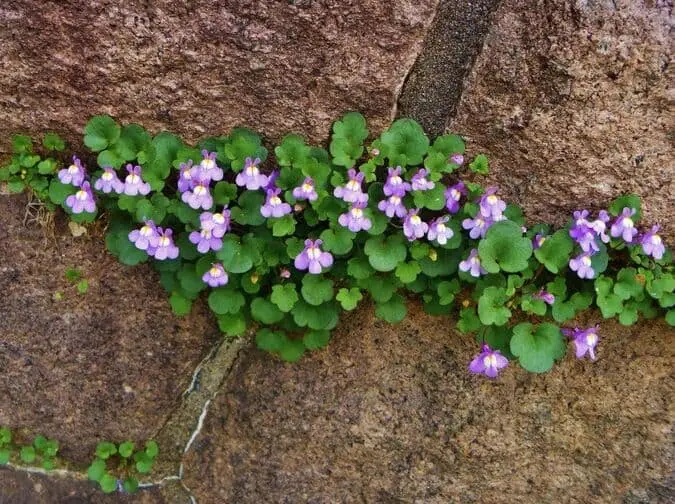
Kenilworth Miniature Ivy is a great filler plant between flagstones or tiny containers. The lovely scalloped leaves of Cymbalaria muralis, often known as ivy-leaved toadflax, give texture to the landscape even when the lavender flowers aren’t flowering. An excellent choice for negative spaces, especially on walls. In a trough, it looks nearly like a moss carpet. Plants will spread, and their stems will take root in the ground. Their flower heads are relatively small, measuring only 2-4 cm in height.
7. Forget-Me-Not

The Forget-Me-Not is a lovely flowering plant that blooms in various colours, including blue, yellow, white, and pink. This gorgeous plant can be placed in your home, yard, or on the front porch. Gorgeous little butterflies and buzzing bees likely surround you. The Forget-Me-Not plant has a history surrounding its name, according to which there was once a mediaeval knight who was travelling down the river with his lady love one night. He was holding a bouquet that he was most likely going to give to the lady. The knight, however, fell into the river because his armour was too heavy. He flung the flower bouquet at his beloved as he was falling and cried, “Forget-me-not!” It’s a short plant with a medium growth rate (typically only 5 inches at maturity). Flowers are usually 1 cm in diameter or smaller, flat-faced, and blue.
6. Baby’s Breath
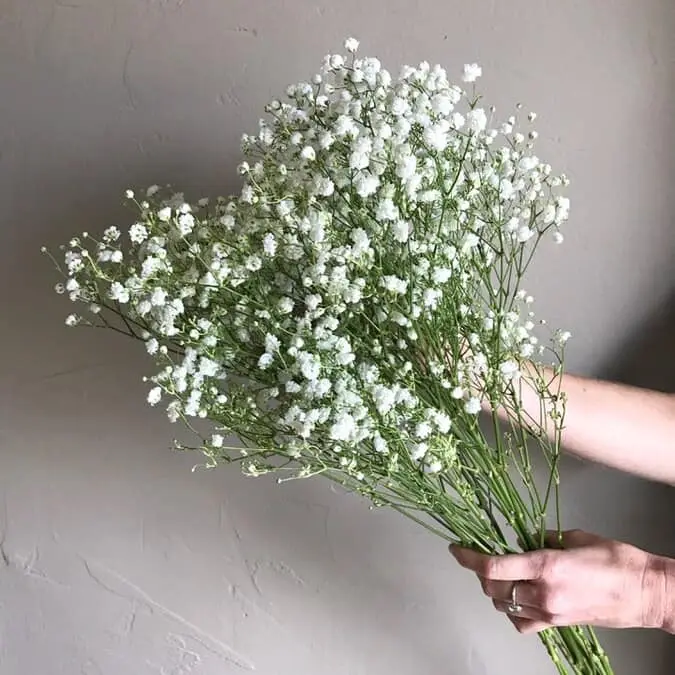
The carnation family, also known as Caryophyllaceae, includes a variety of annual and perennial herbaceous plants known as baby’s breath. It has lance-shaped, slender, bluish-green leaves with numerous five-petaled small white or pink flowers that bloom on branching long stalks. Baby’s breath stems split into numerous branches, creating a stunning misty effect in floral arrangements, rock gardens, and bouquets. People used the baby’s breath plant’s edible roots as a therapeutic ingredient and the smaller blossoms as cut flowers. The blossoms of baby’s breath are little, roughly the size of a pencil eraser. Each plant, on the other hand, will produce hundreds of blooms. The blossom size varies between 3 and 6 inches.
5. Black swallow-wort
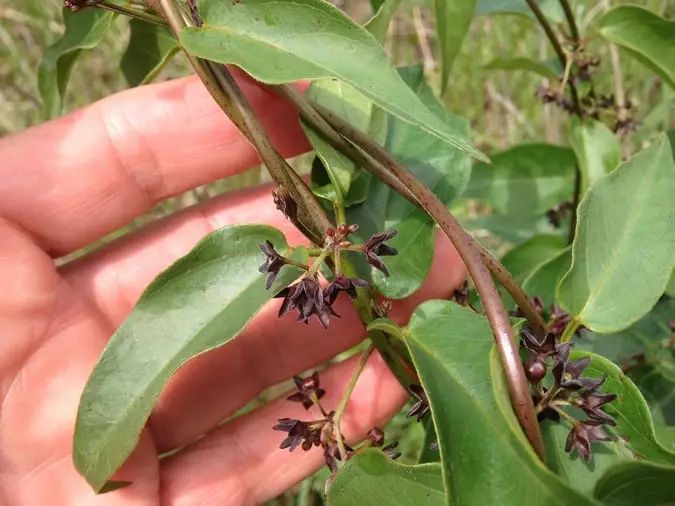
From the leaf axils, loose, branched clusters of up to ten stalked, star-shaped blooms appear, commonly referred to as Black swallow-wort. Flowers are roughly 14 inches across, dark purple, and have five fleshy petals with minute white hairs on the upper surface. A dark purple collar surrounds the pale yellow crown in the centre. On short stalks, opposing leaves are 2 to 5 inches long, 12 to 3 inches wide, narrowly to broadly egg-shaped, tapering to a sharply pointed tip, rounded to somewhat heart-shaped at the base, toothless, hairless, lustrous, dark green. Black Swallow-wort, also known as Cynanchum Louise or Vincetoxicum nigrum, is a plant related to milkweeds and dogbanes introduced to New England or eastern Canada by European settlers in the 1800s.
4. Black medic

Black medic produces an extremely tight, packed cluster of little yellow flowers in the spring and until the fall. The adult flowers produce a tightly coiled black seedpod, thus the name ‘black medic.’ The axils of the leaves yield petite, vivid yellow blooms. Each inflorescence is a tight cluster of 10-50 small flowers rounded to slightly elongated. Round flower heads, 1/4 to 1/3 inch in diameter, with 10 to 20 short-stalked flowers at the end of stems originating from leaf axils, the cluster stem much longer than the subtending leaf. Flowers are bright yellow and pear-shaped, with a large upper petal (standard) and two little lateral petals covering the keel below. The hairy calyx bears five thin teeth.
3. Alfalfa

Alfalfa, often known as Lucerne, is a flowering plant that belongs to the Fabaceae family of legumes. Alfalfa is noted for its drought, heat, and cold tolerance and the high productivity and quality of its herbage. The plant is also used to improve soil quality as a cover crop and green manure. This plant has a high protein content, vitamins A, E, D, and K, as well as minerals including phosphorus, zinc, folate, and manganese. Alfalfa has traditionally been used to treat arthritis, kidney, bladder, urinary tract infections, and prostate problems. These tiniest blooms were also used to decrease cholesterol levels. This plant has a lifespan of up to 20 years. Up to 40 violet or blue short-stalked blooms rise from the leaf axils, forming a compact packed raceme 2 inches long.
2. Bladderwort

The Bladderwort, or Utricularia, is a carnivorous aquatic plant with a long evolutionary history. They’re arguably one of the most evolved plant species on the planet. The only similarities between Bladderworts and plants, in general, are that they photosynthesize and produce flowers. There are no roots, stalks, or leaves in them. Despite the small size of their traps and stolons, Utricularia flowers are the showiest and most attractive feature of the plant, rivalling the complexity and showmanship of many orchids. It can range in size from 2 mm to 10 cm in width. Except for Antarctica, we can find these little blooms on every continent. They are mostly found in lakes, streams, and flooded places. Bladderwort flowers come in various colours, including red, yellow, violet, purple, pink, and white — and sometimes more than one!
1. Watermeal
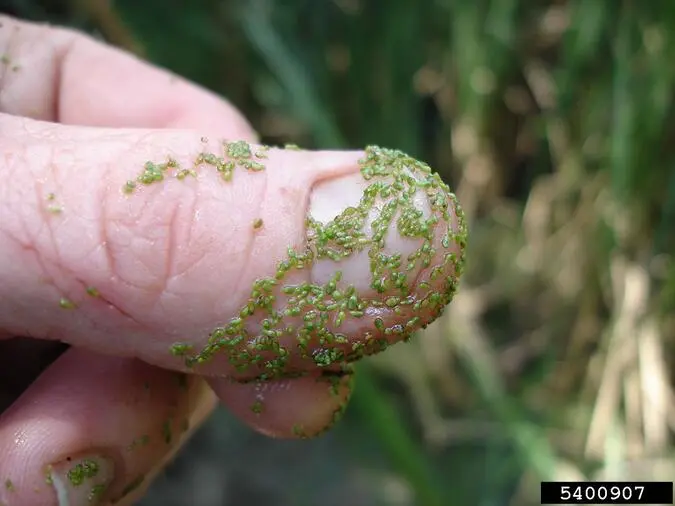
The watermeal, or Wolffia globose, is the tiniest flowering plant. This bright green oval plant is roughly the size of a grain of rice and can be found worldwide! Wolffia also produces the tiniest fruit on the planet. The plant is about one millimetre long on average. They also have the appearance of a little, green or yellow-green, free-floating plant. It does not have a root system. One stamen and one pistil are found in each of these little blooms. Amphibians, fish, reptiles, and other animals used them as camouflage. Genetic engineers modify them to generate low-cost medications like vaccinations. Because these tiny flowers contain roughly 44% protein, they were also employed to manufacture bioplastics.
